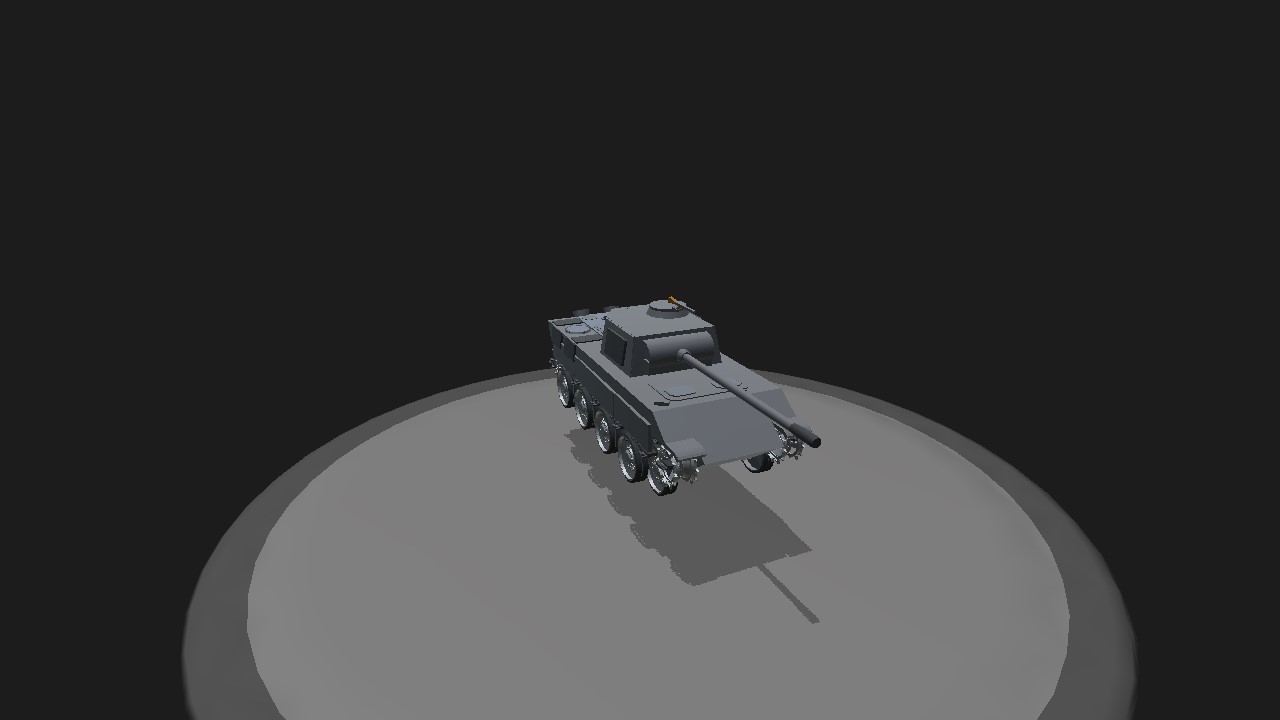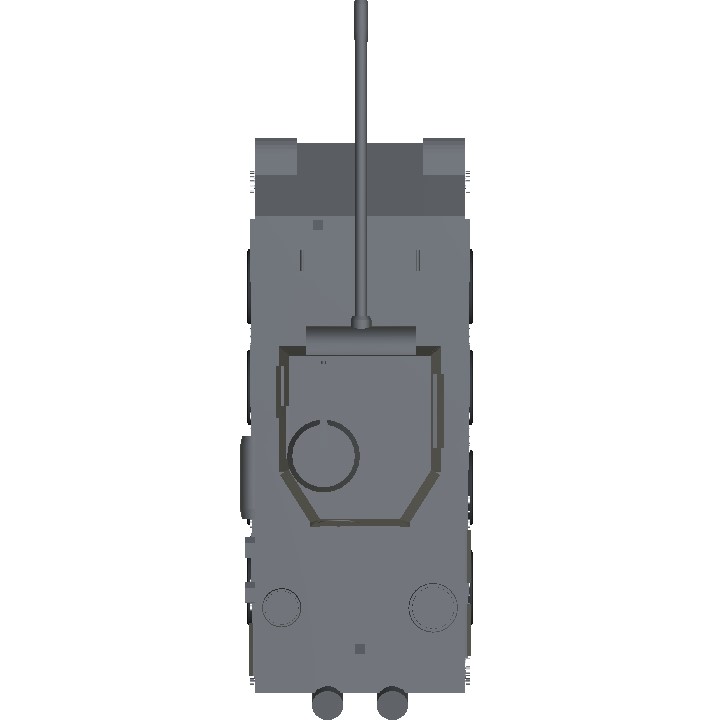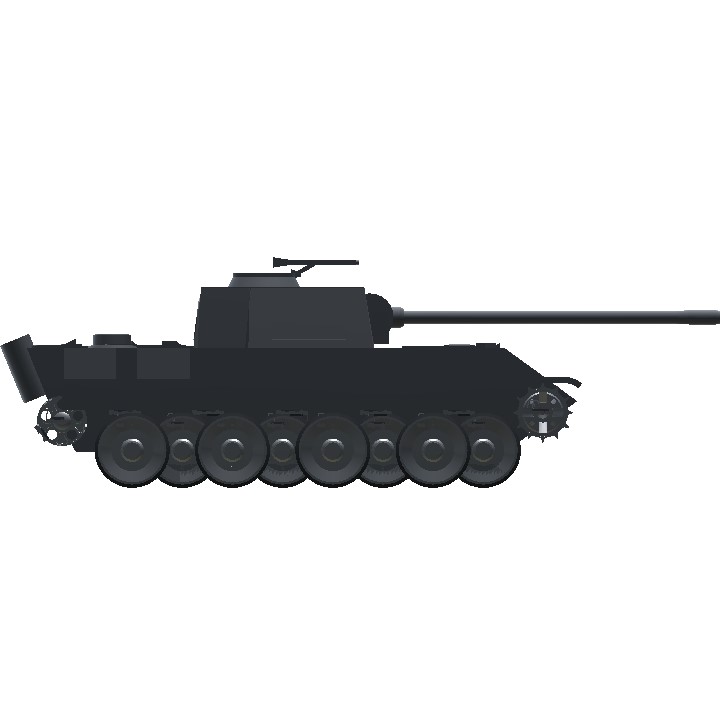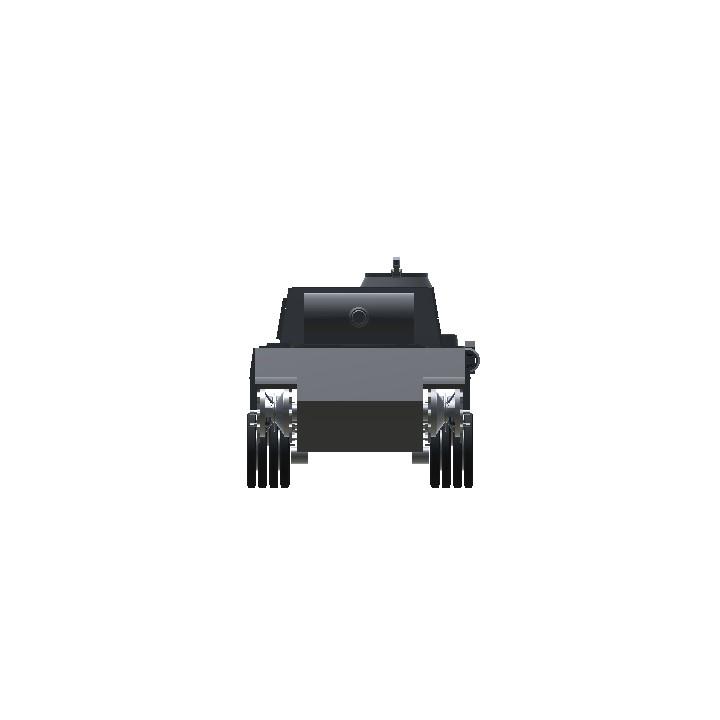The Panther is a German medium tank deployed during World War II on the Eastern and Western Fronts in Europe from mid-1943 to the war's end in 1945. It had the ordnance inventory designation of Sd.Kfz. 171. It was designated as the Panzerkampfwagen V Panther until 27 February 1944, when Hitler ordered that the Roman numeral "V" be deleted. Contemporary English language reports sometimes refer to it as the "Mark V".
Panzerkampfwagen V Panther
Bundesarchiv Bild 183-H26258, Panzer V "Panther".jpg
Panther Ausf. D tanks, 1943. The D model can best be recognized by the drum-shaped cupola and/or the "Letterbox" hull machine gun slot.
Type
Medium tank
Place of origin
Nazi Germany
Service history
In service
1943–1945 (Nazi Germany)
1944–1947 (France)
Used by
Nazi Germany
France
Limited use by other militaries (see Postwar and foreign use)
Wars
World War II
Production history
Designer
MAN AG
Designed
1942
Manufacturer
MAN, Daimler-Benz, MNH
Unit cost
117,100 Reichmarks (Without weapons, optics, or radio)
176,100 Reichmarks (combat ready)[1]
Produced
1943–1945 (1946- 9 postwar for the British Army)
No. built
about 6,000[2]
Variants
Ausf. D, Ausf. A, Ausf. G, Befehlspanzer (command tank), Beobachtungspanzer (artillery observer vehicle), Bergepanther (armoured recovery vehicle)
Specifications
Mass
44.8 tonnes (44.1 long tons; 49.4 short tons)[3]
Length
6.87 m (22 ft 6 in)
8.66 metres (28 ft 5 in) gun forward[3]
Width
3.27 m (10 ft 9 in)[3]
3.42 m (11 ft 3 in) with skirts
Height
2.99 m (9 ft 10 in)
Crew
5 (driver, radio-operator/hull machine gunner, commander, gunner, loader)
Armour
up to 100 mm
Main
armament
1 × 7.5 cm KwK 42 L/70
with 79 rounds[3]
Secondary
armament
2 × 7.92 mm MG 34 machine guns
with 5,100 rounds
Engine
V-12 petrol Maybach HL230 P30[3]
700 PS (690 hp, 515 kW)
Power/weight
15.39 PS (11.5 kW)/tonne (13.77 hp/ton)
Transmission
ZF AK 7-200. 7 forward 1 reverse[3]
Suspension
double torsion bar, interleaved road wheels
Fuel capacity
720 litres (160 imp gal; 190 US gal)
Operational
range
Road: 200 km (120 mi)
Cross-country: 100 km (62 mi) [4]
Speed
55 km/h (34 mph) (first models)
46 km/h (29 mph) (later models)
The Panther was intended to counter the Soviet T-34 and to replace the Panzer III and Panzer IV. Nevertheless, it served alongside the Panzer IV and the heavier Tiger I until the end of the war. It is considered one of the best tanks of World War II for its excellent firepower and protection, although its reliability was less impressive.[5]
The Panther was a compromise. While having essentially the same engine as the Tiger I, it had more efficient frontal hull armour,[6] better gun penetration, was lighter and faster, and could traverse rough terrain better than the Tiger I. The trade-off was weaker side armour, which made it vulnerable to flanking fire. The Panther proved to be effective in open country and long range engagements, but did not provide enough high explosive firepower against infantry.[7]
The Panther was far cheaper to produce than the Tiger I, and only slightly more expensive than the Panzer IV. Key elements of the Panther design, such as its armour, transmission, and final drive, were simplifications made to improve production rates and address raw material shortages. The overall design remained somewhat over-engineered.[8][9] The Panther was rushed into combat at the Battle of Kursk despite numerous unresolved technical problems, leading to high losses due to mechanical failure. Most design flaws were rectified by late 1943 and early 1944, though the bombing of production plants, increasing shortages of high quality alloys for critical components, shortage of fuel and training space, and the declining quality of crews all impacted the tank's effectiveness.
Though officially classified as a medium tank, its weight is more like that of a heavy tank, as its weight of 44.8 tons puts it roughly in the same category as the American M26 Pershing (41.7 tons), British Churchill (40.7 tons) and the Soviet IS-2 (46 tons) heavy tanks. The tank had a very high power-to-weight ratio, making it extremely mobile regardless of its tonnage. Its weight still caused logistical problems, such as an inability to cross certain bridges.
Controls:
Pitch and roll for movement
VTOL and trim for turret controls
Extra information:
Main gun does a lot more damage than the average machine gun
On the commanders copula there is a fast firing MG 42
Missed parts act as armor
Specifications
General Characteristics
- Predecessor Tank Challenge! [28 upvote prize]
- Created On Android
- Wingspan 10.0ft (3.0m)
- Length 28.2ft (8.6m)
- Height 8.1ft (2.5m)
- Empty Weight 47,897lbs (21,725kg)
- Loaded Weight 48,441lbs (21,972kg)
Performance
- Wing Loading 72,005.9lbs/ft2 (351,563.6kg/m2)
- Wing Area 0.7ft2 (0.1m2)
- Drag Points 5259
Parts
- Number of Parts 125
- Control Surfaces 0
- Performance Cost 341
Required Mods
-
Tracks 2
by MOPCKOE_DNISHE
Version 0.8 (7/7/2019 11:58:44 AM)
View Mod Page






@TrislandianAlliance yes but I made this to look real and to have fun with
The Panther Also Have An Underpowered Engine And Drivetrain Right?